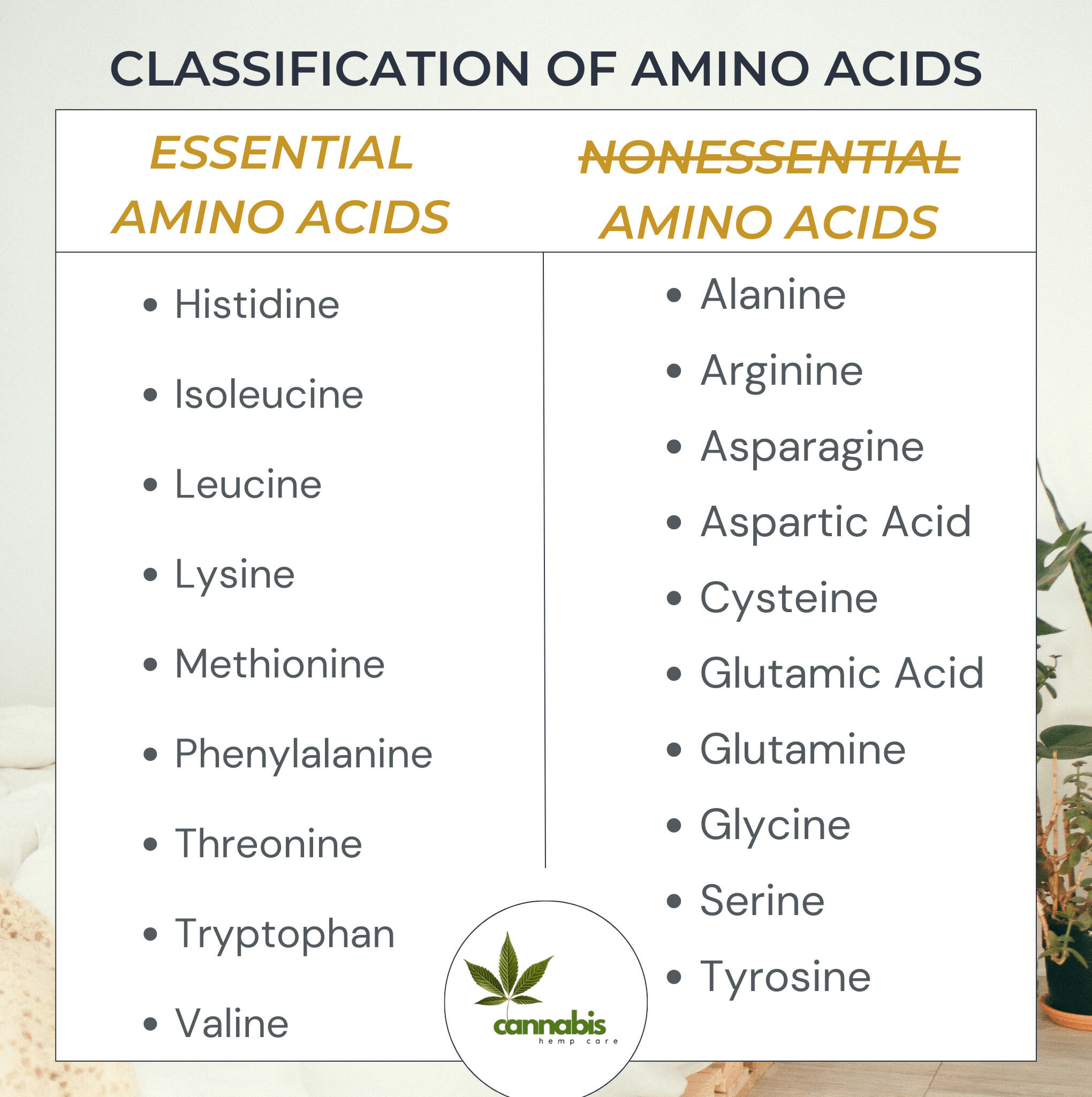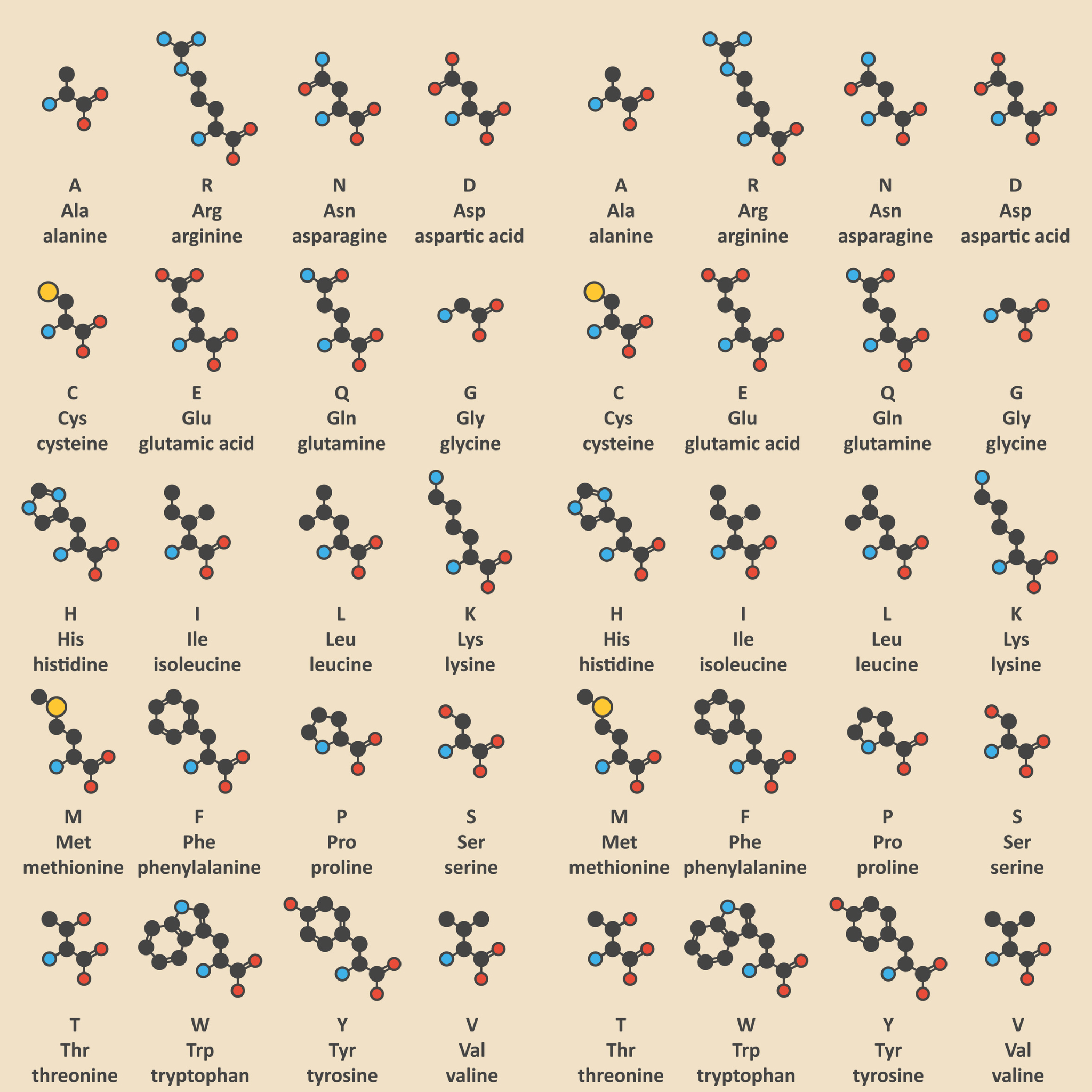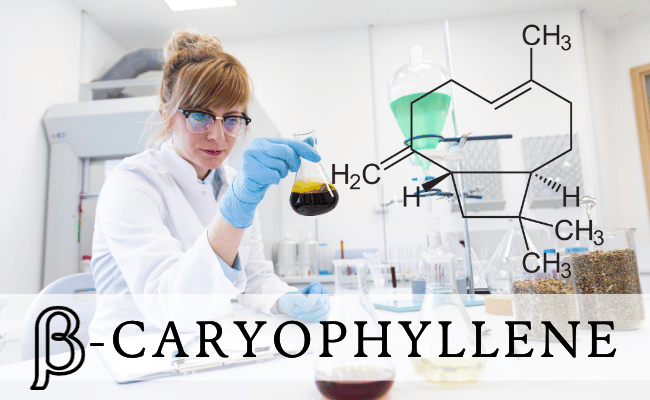Amino acids, often deemed the “building blocks of life,” serve as the fundamental units that combine to form proteins. These proteins are then digested or broken down into individual amino acids during various metabolic processes.
Amino acids are indispensable to a spectrum of physiological activities—they break down food, contribute to tissue repair, aid in nutrient absorption, and perform many other body functions. The human body requires 20 different amino acids, each of which participates in unique biochemical pathways.
Classification of Amino Acids

Essential Amino Acids
These amino acids are termed “essential” because the body cannot synthesize them endogenously; they must be ingested through diet1. The nine essential amino acids are:
1. Histidine
Integral for the synthesis of histamine, a neurotransmitter crucial for immune function, sleep, and sexual function.
2. Isoleucine
A pivotal amino acid for muscle metabolism, hemoglobin production, and energy regulation.
3. Leucine
Vital for stimulating protein synthesis, hormone production, and muscle repair.
4. Lysine
Necessary for hormone production, calcium absorption, and immune function.
5. Methionine
Facilitates metabolic processes and aids in the absorption of essential minerals.
6. Phenylalanine
Required for the biosynthesis of neurotransmitters like dopamine, epinephrine, and norepinephrine.
7. Threonine
Critical for the stabilization of proteins such as collagen and elastin, which are essential for skin and connective tissue. Additionally, it aids in fat metabolism.
8. Tryptophan
This amino acid is a precursor to serotonin, a neurotransmitter that regulates mood, appetite, and sleep.
9. Valine
Plays a significant role in muscle growth and energy production.
Nonessential Amino Acids
While essential amino acids may occupy a privileged status due to their indispensability from dietary sources, nonessential amino acids are no less critical to human physiology2.
The term “nonessential” can be misleading; it simply signifies that these amino acids can be synthesized endogenously by the body, obviating the need for external supplementation.
1. Alanine
A significant player in the glucose-alanine cycle, alanine helps in the conversion of glucose to energy. It is also pivotal in supporting the immune system by aiding in the production of lymphocytes.
2. Arginine
Notably involved in cell division and wound healing, arginine also assists in removing ammonia from the body. Moreover, it is a precursor to nitric oxide, a compound that improves blood flow and nutrient delivery to tissues.
3. Asparagine
As a critical amino acid for the nervous system, asparagine modulates neurotransmission and plays a role in neurodevelopment.
4. Aspartic Acid
This amino acid participates in the citric acid cycle, which is the metabolic pathway for generating energy. It is also essential for the synthesis of other amino acids and biochemical compounds.
5. Cysteine
Essential for the formation of the body’s principal antioxidant, glutathione, cysteine aids in detoxification and fortifies the immune system. It is also involved in protein folding, thus influencing the 3D structure and functionality of proteins.
6. Glutamic Acid
Integral to the biosynthesis of other amino acids, glutamic acid also acts as a neurotransmitter. It is involved in cognitive functions such as learning and memory.
7. Glutamine
The most abundant amino acid in the bloodstream, glutamine is critical for intestinal health and immune function. It’s often administered to support recovery after surgery.
8. Glycine
Involved in the synthesis of various biochemicals such as heme, collagen, and creatine, glycine is a versatile amino acid that also has neurotransmitter functions.
9. Proline
A major component of collagen, proline plays a critical role in tissue repair, especially in the skin, bones, and connective tissues.
10. Serine
Important in metabolism and muscle formation, serine also plays a role in the functioning of the immune system.
11. Tyrosine
A precursor to neurotransmitters like dopamine, epinephrine, and norepinephrine, tyrosine has ramifications for mood regulation and stress response.
Conditionally Essential Amino Acids
Some nonessential amino acids can become conditionally essential during periods of illness, stress, or intense physical activity. These include arginine, cysteine, glutamine, glycine, proline, and serine. In such circumstances, the body’s synthetic capacity may be overwhelmed, necessitating dietary supplementation.
Molecular Structure and Chemical Nature
Each amino acid is an organic chemical comprising a molecular structure with carbon-hydrogen bonds. The core structure consists of a central carbon atom, an amino group, a carboxylic acid group, a hydrogen atom, and an R-group or side-chain group3.
The unique R-group dictates the amino acid’s chemical properties, including how it will combine with other amino acids and its role in protein formation.

Biological Functions of Amino Acids
Amino acids partake in numerous biological roles:
1. Break Down Food
Amino acids contribute to the digestion and metabolic processing of nutrients.
2. Grow and Repair Body Tissue
Essential for cellular regeneration and tissue repair, particularly after physical exertion or surgical procedures.
3. Neurotransmitter Production
Amino acids like tryptophan and phenylalanine are precursors to neurotransmitters that influence mood, focus, and sleep.
4. Source of Energy
In specific metabolic pathways, amino acids can be converted into glucose or fatty acids, serving as an energy source.
5. Muscle Development
Amino acids like leucine are essential for muscle growth and prevention of muscle loss, particularly post-exercise.
6. Immunity and Skin Health
Amino acids like lysine and threonine are essential for immune function and the maintenance of skin, hair, and nails.
7. Digestive System
They help in nutrient absorption and maintaining a balanced gut flora.
Nutritional Requirements and Dietary Sources
The recommended daily allowances (RDAs)4 for essential amino acids are based on body weight and specific physiological needs. Animal proteins like beef, poultry, and eggs are prime sources of essential amino acids as they provide ‘complete proteins.
Amino Acid Supplements
Supplemental forms of amino acids are available, although they are not universally endorsed by regulatory bodies like the U.S. Food and Drug Administration. These supplements are often marketed to improve mood, support recovery after surgery, and for other health claims.
However, consultation with a healthcare provider is strongly advised before supplementation, particularly because excess intake can lead to jitteriness and other side effects.

Conclusion
Amino acids are fundamental in carrying out myriad physiological processes, from breaking down food to tissue repair and neurotransmitter synthesis.
To ensure optimal health, it is paramount to maintain a balanced intake of essential and nonessential amino acids, preferably through a diet rich in high-quality proteins and enzymes.
Sources
- “Essential Amino Acids: Definition, Benefits, and Foods.” Www.medicalnewstoday.com, 21 Jan. 2019, www.medicalnewstoday.com/articles/324229#incorporating-essential-amino-acids-into-the-diet. Accessed 13 Sept. 2023. ↩︎
- “Nonessential Amino Acid – an Overview | ScienceDirect Topics.” Sciencedirect.com, 2018, www.sciencedirect.com/topics/neuroscience/nonessential-amino-acid. Accessed 13 Sept. 2023. ↩︎
- Watermatters. “Hydrogen: What’s the Difference between H, H2, H+, H- and OH- ?” Watermatters, www.watermatters.ca/blogs/articles/hydrogen-what-s-the-difference-between-h-h2-h-h-and-oh. Accessed 12 Sept. 2023. ↩︎
- National Institute of Health. “Nutrient Recommendations and Databases.” Ods.od.nih.gov, ods.od.nih.gov/HealthInformation/nutrientrecommendations.aspx. Accessed 13 Sept. 2023. ↩︎




































